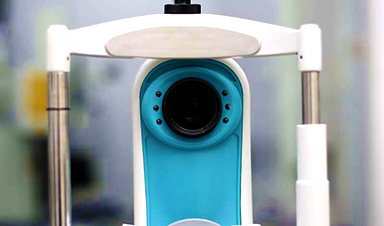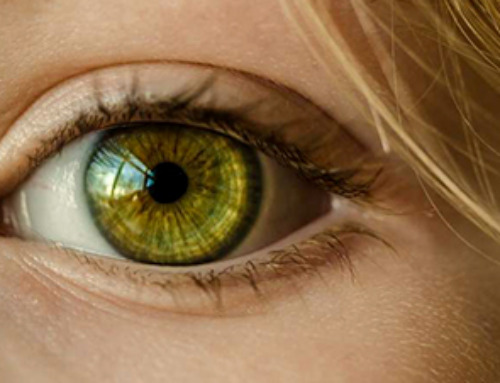AI-enabled imaging of the retina’s network of veins and arteries can accurately predict cardiovascular disease and death, without the need for blood tests or blood pressure measurement, finds research published online in the British Journal of Ophthalmology.
Circulatory diseases, including cardiovascular disease, coronary heart disease, heart failure and stroke, are major causes of ill health and death worldwide, accounting for 1 in 4 UK deaths alone.
While several risk frameworks exist, these aren’t always able to accurately identify those who will go on to develop or die of circulatory diseases, say the researchers. Previously published research indicates that the width of the tiny veins and arteries (arterioles and venules) of the retina—the part of the eye that receives and organizes visual information—may provide an accurate early indicator of circulatory disease. But it’s not clear whether these findings apply consistently and equally to men and women.
So the researchers developed a fully automated artificial intelligence (AI)- enabled algorithm (QUantitative Analysis of Retinal vessels Topology and siZe, or QUARTZ for short) to develop models to assess the potential of retinal vasculature imaging plus known risk factors to predict vascular health and death.
They applied QUARTZ to retinal images from 88,052 UK Biobank participants aged 40-69, looking specifically at the width, vessel area, and degree of curviness (tortuosity) of the arterioles and venules in the retina to develop prediction models for stroke, heart attack, and death from circulatory disease.
They subsequently applied these models to the retinal images of 7411 participants, aged 48-92, of the European Prospective Investigation into Cancer (EPIC)-Norfolk study. The performance of QUARTZ was compared with the widely used Framingham Risk Scores framework, both separately and jointly.
In men, arteriolar and venular width, tortuosity, and width variation emerged as important predictors of death from circulatory disease. In women, arteriolar and venular area and width and venular tortuosity and width variation contributed to risk prediction.
The predictive impact of retinal vasculature on circulatory disease death interacted with smoking, drugs to treat high blood pressure, and previous heart attack. Overall, these predictive models, based on age, smoking, medical history and retinal vasculature, captured between half and two thirds of circulatory disease deaths in those most at risk.
Retinal vasculature models captured about 5% more cases of stroke in UK Biobank men and 8% more cases in UK Biobank women and 3% more cases among EPIC-Norfolk men most at risk, but nearly 2% fewer cases among EPIC-Norfolk women. Framingham Risk Scores captured more cases of heart attack among those most at risk.
Adding retinal vasculature to Framingham Risk Scores effected only marginal changes in the prediction of stroke or heart attack. But a simpler non-invasive risk score based on age, sex, smoking, medical history and retinal vasculature performed as well as the Framingham Risk Scores, and without the need for blood tests or blood pressure measurement, say the researchers.
They acknowledge that both groups of study participants have healthier lifestyles than other geographically similar middle-aged people, and that most are white. But this is the largest population-based study of retinal vasculature, and the prediction models were externally validated in a large number of people, they explain.
Retinal imaging is already common practice in the UK and the U.S., point out the researchers, who conclude, “AI-enabled vasculometry risk prediction is fully automated, low cost, non-invasive and has the potential for reaching a higher proportion of the population in the community because of ‘high street’ availability and because blood sampling or [blood pressure measurement] are not needed.”
They continue, “[Retinal vasculature] is a microvascular marker, hence offers better prediction for circulatory mortality and stroke compared with [heart attack] which is more macrovascular, except perhaps in women.
“In the general population it could be used as a non-contact form of systemic vascular health check, to triage those at medium-high risk of circulatory mortality for further clinical risk assessment and appropriate intervention.”
In the UK, for example, it could be included in the primary care NHS Health Check for those aged 41-74, they suggest.
In a linked editorial, Drs. Ify Mordi and Emanuele Trucco of the University of Dundee, Scotland, explain that the use of retinal vasculature changes to inform overall cardiovascular risk is “certainly attractive and intuitive,” but is yet to become part of routine clinical practice.
“Using retinal screening in this way would presumably require a significant increase in the number of ophthalmologists or otherwise trained assessors,” they suggest, and ask: Which specialty would take on responsibility for preventive treatment and the additional workload: ophthalmologists, cardiologists, or primary care practitioners?
“What is now needed is for ophthalmologists, cardiologists, primary care physicians and computer scientists to work together to design studies to determine whether using this information improves clinical outcome, and, if so, to work with regulatory bodies, scientific societies and healthcare systems to optimize clinical workflows and enable practical implementation in routine practice,” they conclude.
News
Nanoflowers rejuvenate old and damaged human cells by replacing their mitochondria
Biomedical researchers at Texas A&M University may have discovered a way to stop or even reverse the decline of cellular energy production—a finding that could have revolutionary effects across medicine. Dr. Akhilesh K. Gaharwar [...]
The Stunning New Push to Protect the Invisible 99% of Life
Scientists worldwide have joined forces to build the first-ever roadmap for conserving Earth’s vast invisible majority—microbes. Their new IUCN Specialist Group reframes conservation by elevating microbial life to the same urgency as plants and [...]
Scientists Find a Way to Help the Brain Clear Alzheimer’s Plaques Naturally
Scientists have discovered that the brain may have a built-in way to fight Alzheimer’s. By activating a protein called Sox9, researchers were able to switch on star-shaped brain cells known as astrocytes and turn them into [...]
Vision can be rebooted in adults with amblyopia, study suggests
Temporarily anesthetizing the retina briefly reverts the activity of the visual system to that observed in early development and enables growth of responses to the amblyopic eye, new research shows. In the common vision [...]
Ultrasound-activated Nanoparticles Kill Liver Cancer and Activate Immune System
A new ultrasound-guided nanotherapy wipes out liver tumors while training the immune system to keep them from coming back. The study, published in Nano Today, introduces a biodegradable nanoparticle system that combines sonodynamic therapy and cell [...]
Magnetic nanoparticles that successfully navigate complex blood vessels may be ready for clinical trials
Every year, 12 million people worldwide suffer a stroke; many die or are permanently impaired. Currently, drugs are administered to dissolve the thrombus that blocks the blood vessel. These drugs spread throughout the entire [...]
Reviving Exhausted T Cells Sparks Powerful Cancer Tumor Elimination
Scientists have discovered how tumors secretly drain the energy from T cells—the immune system’s main cancer fighters—and how blocking that process can bring them back to life. The team found that cancer cells use [...]
Very low LDL-cholesterol correlates to fewer heart problems after stroke
Brigham and Women's Hospital's TIMI Study Group reports that in patients with prior ischemic stroke, very low achieved LDL-cholesterol correlated with fewer major adverse cardiovascular events and fewer recurrent strokes, without an apparent increase [...]
“Great Unified Microscope” Reveals Hidden Micro and Nano Worlds Inside Living Cells
University of Tokyo researchers have created a powerful new microscope that captures both forward- and back-scattered light at once, letting scientists see everything from large cell structures to tiny nanoscale particles in a single shot. Researchers [...]
Breakthrough Alzheimer’s Drug Has a Hidden Problem
Researchers in Japan found that although the Alzheimer’s drug lecanemab successfully removes amyloid plaques from the brain, it does not restore the brain’s waste-clearing system within the first few months of treatment. The study suggests that [...]
Concerning New Research Reveals Colon Cancer Is Skyrocketing in Adults Under 50
Colorectal cancer is striking younger adults at alarming rates, driven by lifestyle and genetic factors. Colorectal cancer (CRC) develops when abnormal cells grow uncontrollably in the colon or rectum, forming tumors that can eventually [...]
Scientists Discover a Natural, Non-Addictive Way To Block Pain That Could Replace Opioids
Scientists have discovered that the body can naturally dull pain through its own localized “benzodiazepine-like” peptides. A groundbreaking study led by a University of Leeds scientist has unveiled new insights into how the body manages pain, [...]
GLP-1 Drugs Like Ozempic Work, but New Research Reveals a Major Catch
Three new Cochrane reviews find evidence that GLP-1 drugs lead to clinically meaningful weight loss, though industry-funded studies raise concerns. Three new reviews from Cochrane have found that GLP-1 medications can lead to significant [...]
How a Palm-Sized Laser Could Change Medicine and Manufacturing
Researchers have developed an innovative and versatile system designed for a new generation of short-pulse lasers. Lasers that produce extremely short bursts of light are known for their remarkable precision, making them indispensable tools [...]
New nanoparticles stimulate the immune system to attack ovarian tumors
Cancer immunotherapy, which uses drugs that stimulate the body’s immune cells to attack tumors, is a promising approach to treating many types of cancer. However, it doesn’t work well for some tumors, including ovarian [...]
New Drug Kills Cancer 20,000x More Effectively With No Detectable Side Effects
By restructuring a common chemotherapy drug, scientists increased its potency by 20,000 times. In a significant step forward for cancer therapy, researchers at Northwestern University have redesigned the molecular structure of a well-known chemotherapy drug, greatly [...]





















